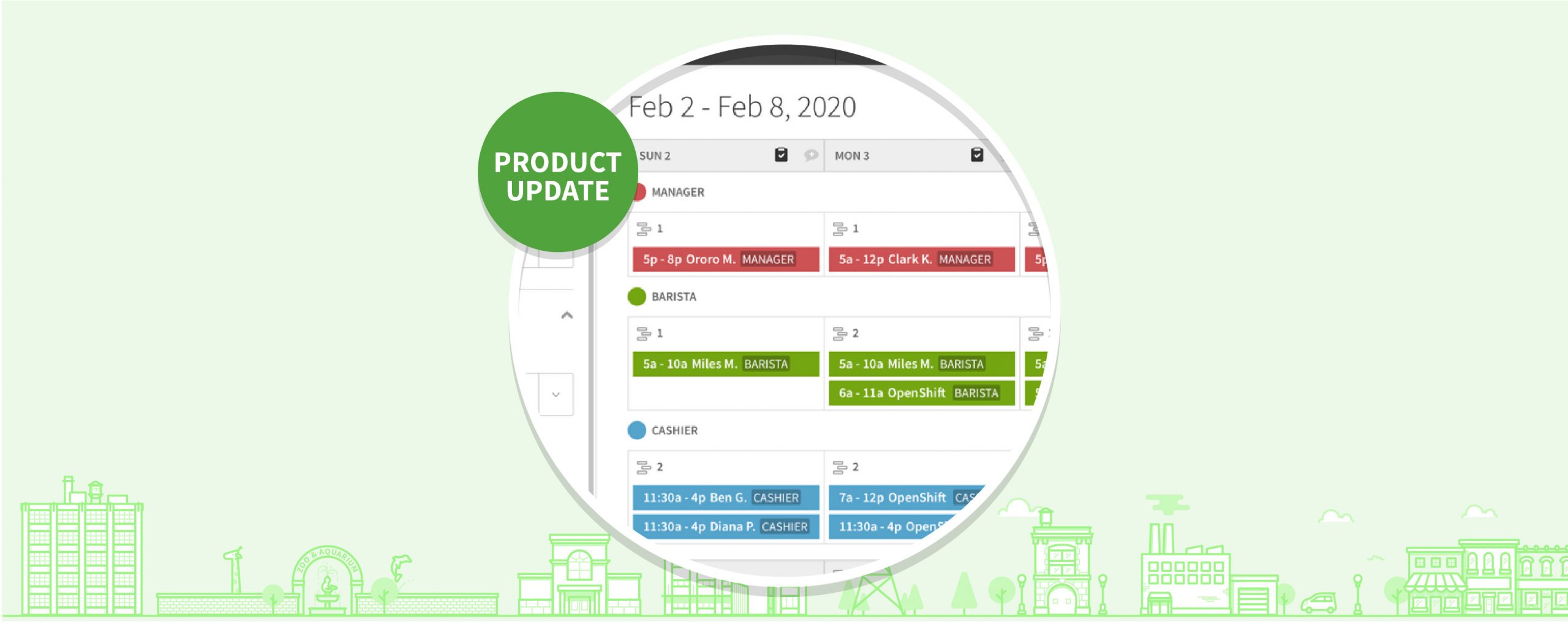Product Update: Enhancements to Schedule Views
Try When I Work for free
As a scheduler for your workplace, you see it all. It may seem like you need a crystal ball to make sure all of your staff are in the right place at the right time. While we don’t have the means to create a magic crystal ball, When I Work just launched the next best thing —enhanced scheduler views! The enhanced position view and brand new coverage view have been crafted so you know exactly who is working, in what position and when to fill any gaps in coverage.
In this blog post, you’ll learn what’s changed and explore examples of how to use position view and coverage view together to get a holistic view of your schedule.
What’s new?
The position view you already use to check your coverage by role has been upgraded. A new compact look shows you even more of your schedule organized by position — perfect for large accounts with a long list of positions. Each day displays the shift count in the top left corner making it easier to review your shift coverage by position for each day. The addition of availability markers helps you make scheduling decisions based on employee’s work preferences.
The new coverage view displays shifts in chronological order in a week view. The shift count for each day is displayed to easily account for the day’s coverage. Both position view and coverage view have an option to highlight OpenShifts allowing you to quickly see which shifts still need to be filled. Use the forecast tools and schedule filters in these views to get even more insight into your labor and coverage.
How it works!
Let’s take a look at some examples of how to use the new views to give you further insight into your schedule. Whether you have 10 employees or 100, these views allow you to see and schedule in a way that makes sense for your business. Each example uses both position and coverage view to create a rock-solid schedule.
Clark’s coffee shop ☕️
Clark is the main scheduling user for the small coffee shop he manages. As Clark creates the schedule, he needs to ensure that there is always a manager, a barista, and two cashiers scheduled during business hours. Instead of counting up the shifts from employee view, Clark switches to position view. Building the schedule in position view shows Clark the shift count by position for each day so he knows he’s covered.
Clark also needs to track total hours by positions as he schedules. Clark selects a position from the filter in the left sidebar and checks the total hours for each position. Making sure he doesn’t schedule too many hours for a position keeps his labor costs in check.
Leslie’s hotel housekeeping ????
Leslie works as the lead of a housekeeping team for a chain of hotels. Leslie manages a team of housekeepers who pick up the OpenShifts at different job sites. Leslie needs to make sure each job site has the proper coverage throughout the week and quickly identify gaps in coverage.
To accomplish this, Leslie switches to position view. She uses the job sites filter in the left sidebar to check the coverage on each job site. As she filters by job site, she can view exactly how many shifts are scheduled and the total hours for the shifts taking place.
Leslie then switches over to coverage view and checks Highlight OpenShifts. She can now easily see which shifts still need to be filled in the order they will occur.
Taylor and the medical clinic ????
Taylor leads a team of nurses at a medical clinic with several locations. Taylor’s scheduling needs are more complex than Clark or Leslie. She not only needs to make sure that there are enough nurses to cover the needs of the clinic but also must ensure that nurses are being scheduled fairly and within their scheduled rotations. On top of that, she needs to have insight into any openings at the other clinic locations in case a nurse can fill a shift when there is a need.
Taylor uses position view to quickly count shifts by position to make sure there are enough nurses to provide for their flow of patients. She checks Show Shifts at other Schedules and Highlight OpenShifts. This allows her to see which shifts still need to be filled across schedules so she can get nurses to the locations that need them most.
Taylor then switches to coverage view and filters the schedule from the user menu. Taking a look at each nurse’s schedule helps her break down the schedule into more manageable chunks and ensure that each nurse is scheduled for their correct rotations.
Try it yourself!
Enhanced scheduler views were created to help you see it all! ????
Try it for yourself from the scheduler. Check out our Help Center for further details about position view and coverage view.






